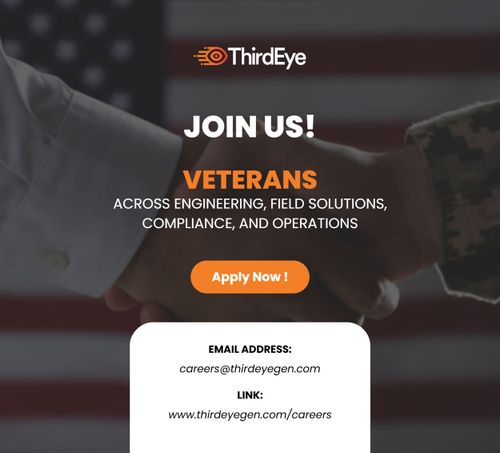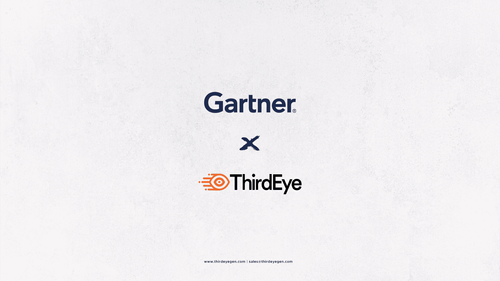
Why ThirdEye Gen Is Hiring Veterans: Mission-Ready Talent for Mission-Critical Tech
October 28, 2025At ThirdEye Gen, we build advanced AR/AI systems for defense and enterprise. That mission demands teams who think clearly under pressure, solve hard problems in ambiguous environments, and obsess over outcomes—not optics. Veterans do exactly that. It’s why we’re doubling down on veteran hiring across engineering, product, operations, field support, and leadership.
“When you’re shipping tech that impacts service members and first responders, you don’t guess at requirements—you live them. Veterans help us design what the mission actually needs.” - ThirdEye Leadership.
The Fit: Defense DNA + Veteran Experience
ThirdEye’s roots are in defense and dual-use innovation—building ruggedized AR/MR hardware and AI software that can survive the field and scale to the enterprise. Veterans bring:
Operational insight: They translate real-world constraints (time, spectrum, comms, SWaP, safety) into product realities.
Standards fluency: Many have hands-on familiarity with MIL-STD testing, cybersecurity controls, and secure workflows.
Team of teams mindset: Mission planning, cross-functional execution, debrief, iterate—veterans institutionalize this loop.
Calm under pressure: Live deployments, tight windows, and high-stakes demos feel familiar, not foreign.
Where Veterans Thrive at ThirdEye
AR/AI Engineering & Integration: Help train and harden models, optimize on-device performance, and integrate sensors into workflows used by defense, public safety, and industrial clients.
Field Solutions & Customer Success: Deploy and support our systems for DoD and allied partners; translate feedback into product changes quickly.
Security & Compliance: Support secure development, export controls, STIGs, and compliance programs (e.g., NIST/CMMC) that keep our products deployment-ready.
Operations & Supply Chain: Apply logistics discipline to manage long-lead components, quality, and readiness—without slowing innovation.
Built for the Field, and the People in It
ThirdEye’s products are designed with end-users in mind: service members, first responders, and operators who deserve tools that just work. Veterans help us keep that promise by pressure-testing:
Ergonomics & durability: Comfort and reliability across long wear, heat, and harsh environments.
Cognitive load: Interfaces that enhance focus, not distract from it—hands-free, glanceable, low-friction.
Speed to value: Rapid setup, offline resilience, and clear failure modes that operators can trust.
Security by design: Data minimization, least privilege, and secure update paths—because security is part of usability.
A Culture That Respects Service and Performance
We’re mission-driven, data-driven, and low-ego. That shows up in how we operate:
Clear objectives, fast feedback: We publish goals, measure what matters, and iterate.
Ownership: Small teams, high autonomy, and support to ship.
Growth path: Technical and leadership tracks with transparent expectations.
Benefits that matter: Competitive comp, equity participation, flexible time, and support for reservists/guard obligations.
Join Us!
If you’re a veteran, or know one, who’s looking to build technology that serves people on the front lines, we’d love to talk. Bring your experience. We’ll bring the mission, the tools, and the team.
Apply: thirdeyegen.com/careers
Questions: careers@thirdeyegen.com















